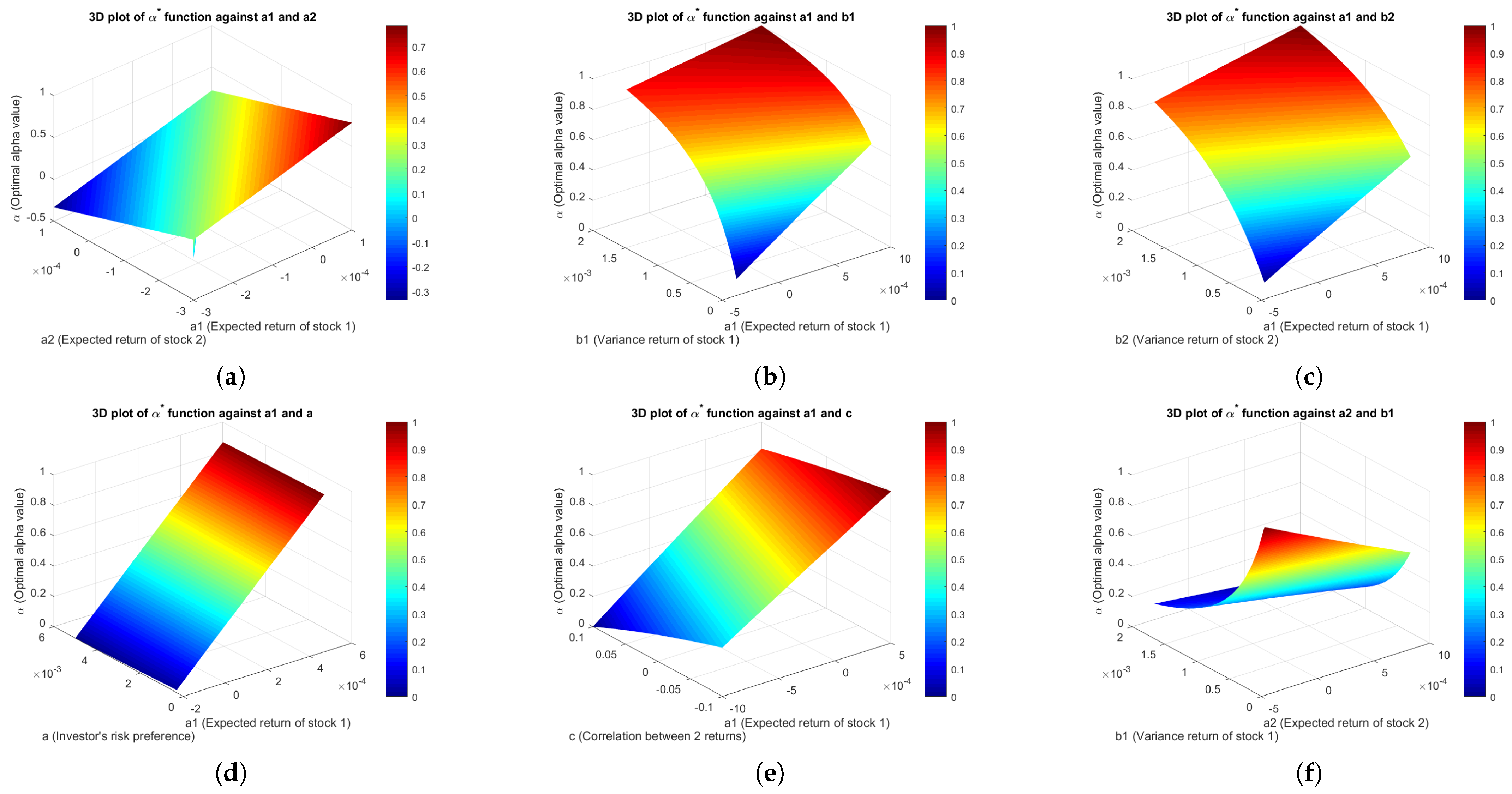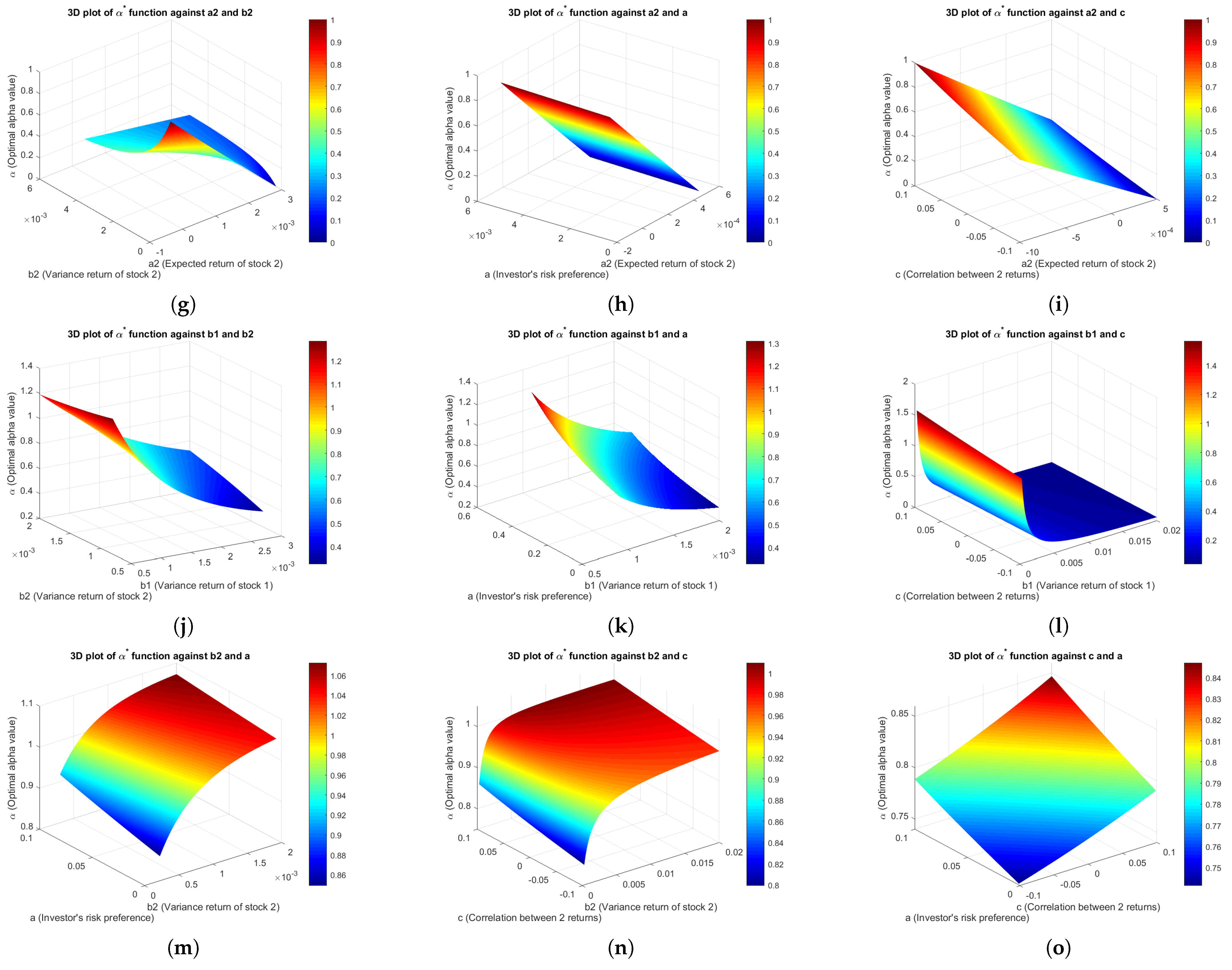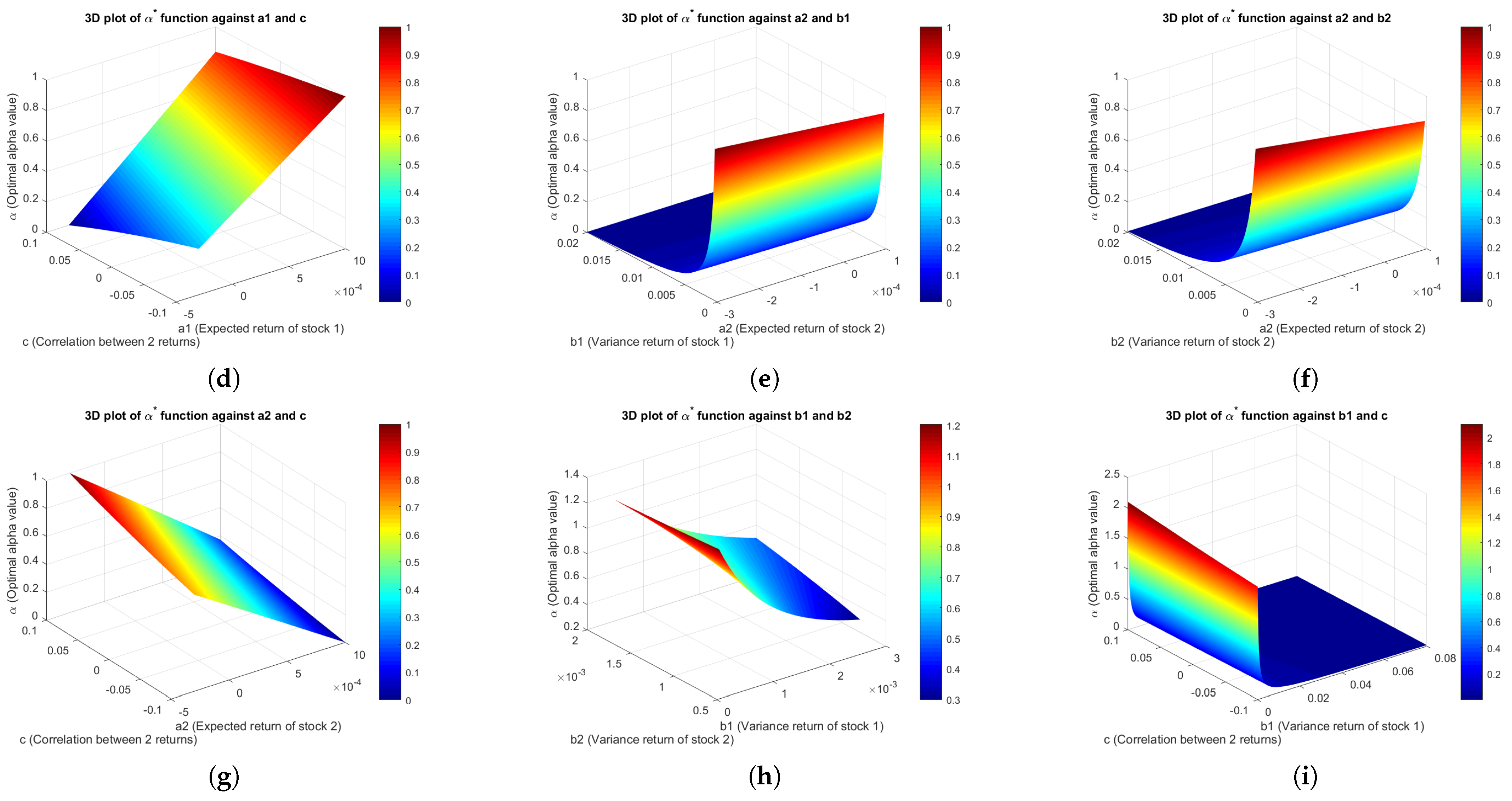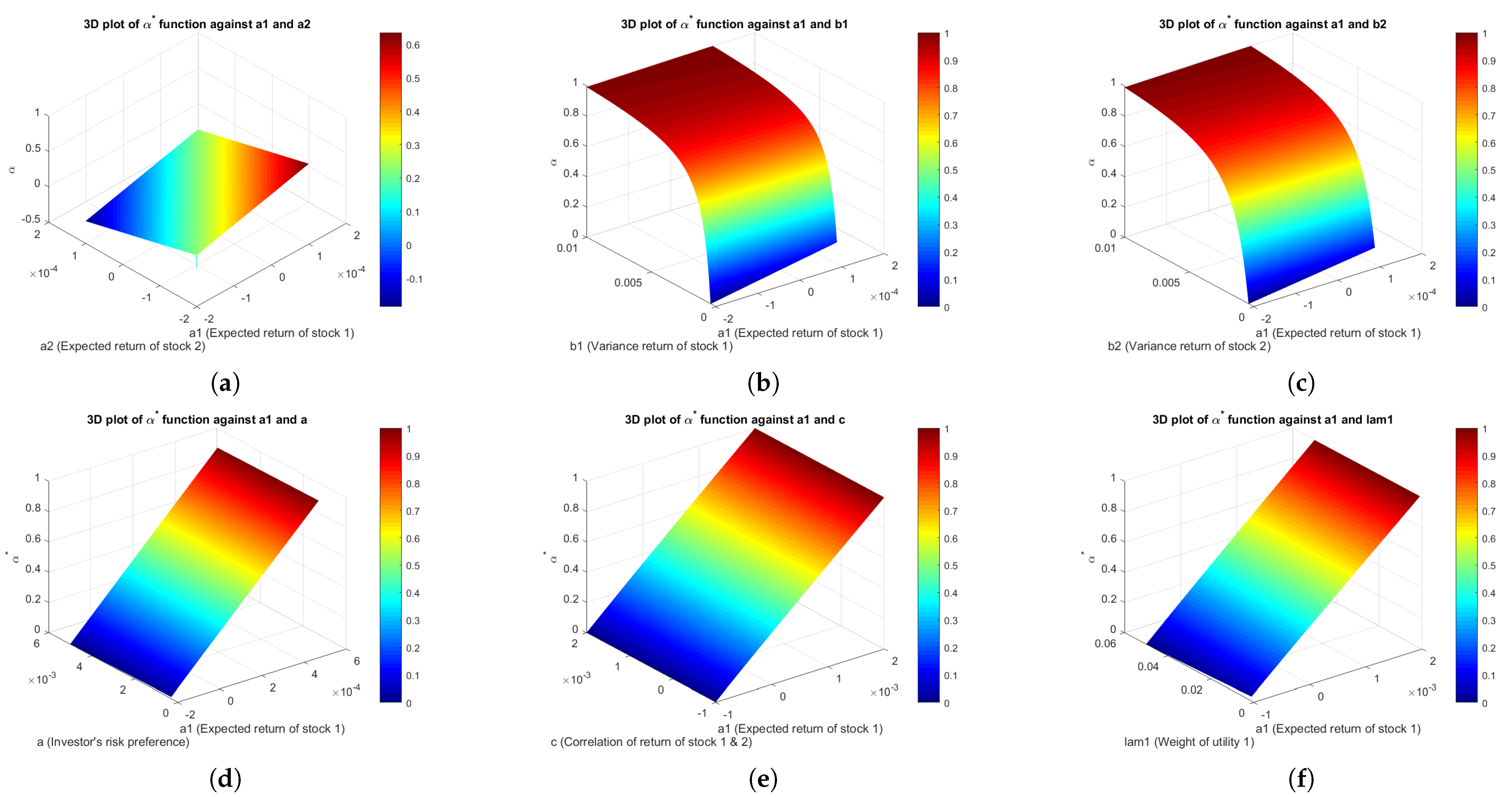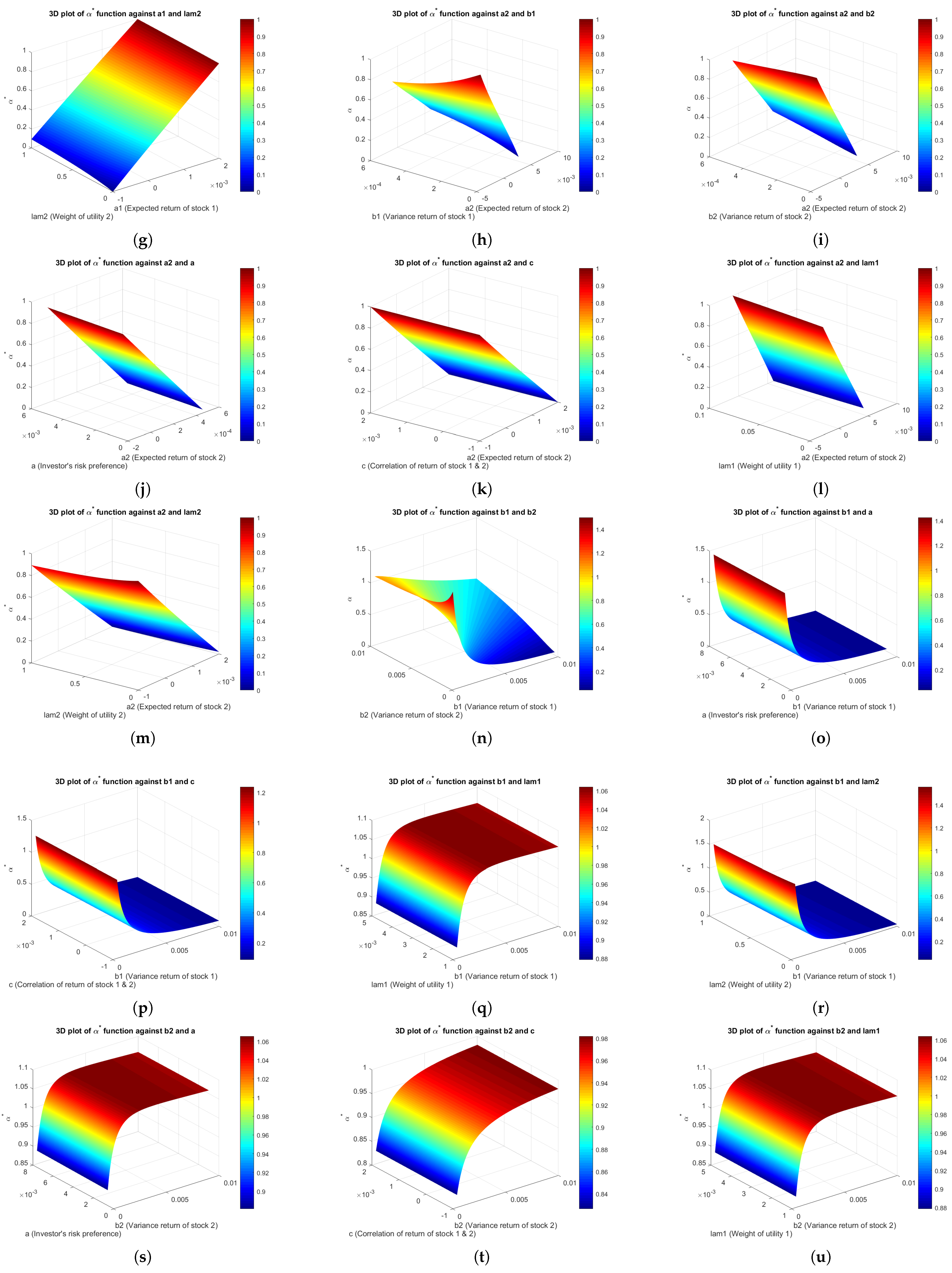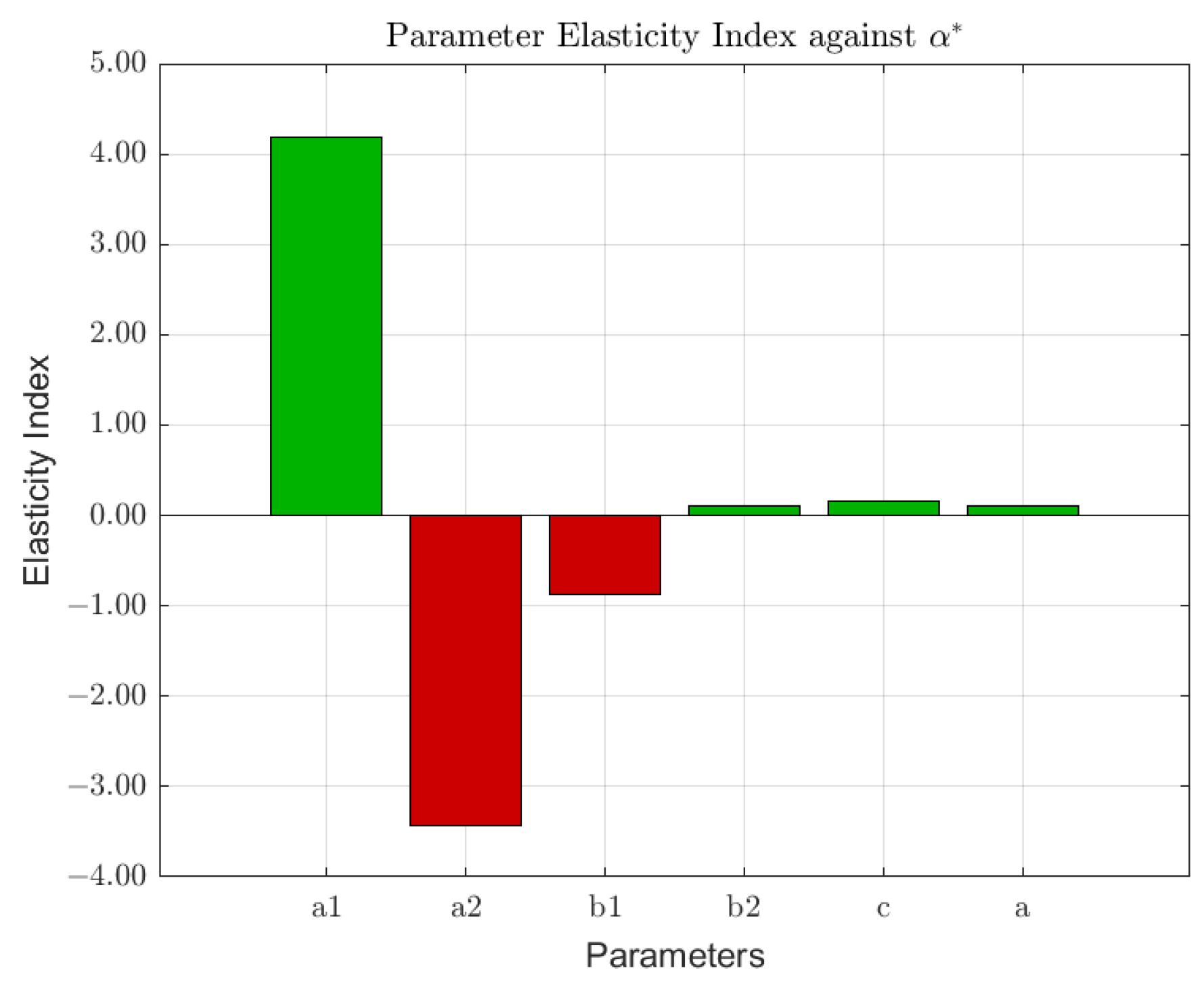1. Introduction
The rapid expansion of the e-commerce sector is the cornerstone of digital transformation in the global economy. In January 2025, this sector experienced significant growth globally, with projections showing that e-commerce sales surpassed
trillion, reflecting an
increase from the value obtained in 2024. As a result, e-commerce sales are expected to continue increasing at a compound annual growth rate (CAGR) of 7.8% from 2025 to 2027. Prior research reported that the growth rate is expected to potentially reach 8 trillion by 2027 (
SellersCommerce, 2025). Companies such as Amazon, eBay, and Alibaba have produced new economic opportunities, as well as introduced challenges for investors intending to capitalize on the potential of the sector through capital markets.
Apart from its growth potential, the e-commerce sector is characterized by heightened market volatility. Factors such as rapid technological innovation, shifts in consumer behavior, and external shocks such as the COVID-19 pandemic contributed to significant fluctuations in stock prices (
Khan et al., 2024;
Yang, 2024;
Q. Zhang, 2023). For example,
H. Zhang (
2024) stated that market returns and macroeconomic indicators were the main drivers of Amazon stock volatility. The sensitivity of this sector to macro-level changes increases the risk of substantial financial losses in situations where portfolios are not carefully managed (
Burnham, 1999).
In addition, high volatility affects both asset prices and investor behavior.
Gopal et al. (
2019) conducted research focusing on how emotions such as fear and greed dominate trading activity during uncertain periods. This was supported by
Dichev and Zheng (
2022), who found that investor returns are more volatile than stock returns. Increased volatility further strengthens investor emotional reactions, potentially leading to inefficient investment decisions in the e-commerce sector.
This dual nature of e-commerce stocks, comprising high growth potential and significant risk, highlights the importance of a structured approach to investment. The research conducted by
Dharshan (
2024);
Manjunath et al. (
2023);
Zou (
2024) reported that effective portfolio construction requires risk–return optimization and also association with investor-specific risk preferences. As
Xidonas et al. (
2010) stated, understanding investor behavior is critical for designing portfolios that reflect realistic decision-making under uncertainty. Therefore, addressing the challenge of selecting an attractive portfolio requires appropriate techniques.
In this context, portfolio optimization models are essential to systematically manage risk in volatile environments such as e-commerce markets. The classical Markowitz framework (
Markowitz, 1952) provides a foundational approach to portfolio optimization by balancing expected return and variance. However, this mean-variance model focuses solely on expected return and risk measured by variance without considering investor risk preferences.
Xidonas et al. (
2010) analyzed the limitation of selecting a portfolio using this theory, and
Touni et al. (
2020) raised concerns about the extent to which the mean-variance model considers the preferences and needs of investors.
These limitations have led to the growing adoption of utility-based methods in portfolio optimization. Utility functions provide a mathematical framework to capture investor preferences. This framework suggests that a rational investor would allocate their portfolio to maximize the expected utility over time (
Fabozzi and Pachamanova, 2016). Several utility functions have been developed for this purpose, including linear, quadratic, exponential, power, and natural logarithm functions (
Ross, 2011).
Based on the descriptions, linear and quadratic utility functions make some unrealistic assumptions, particularly when accounting for risk aversion.
Hanoch and Levy (
1970) reported that quadratic utility produces positive marginal utility in a limited wealth range, making it unsuitable for capturing investor behavior under high volatility. Nonlinear utility functions, such as power and natural logarithm functions, offer greater flexibility in modeling varying degrees of risk aversion. Meanwhile,
Wakker and Yang (
2021) investigated how these functions effectively capture both risk-averse and risk-seeking behavior, relevant for portfolio selection in volatile sectors such as e-commerce.
The e-commerce sector is characterized by high volatility, diversity, uncertainty, and virtuality, which collectively contribute to a complex and dynamic investment environment. These risk characteristics manifest in various forms, including market and economic risks, as well as operational instability.
Babayev (
2024) highlighted that economic risk is a major challenge for e-commerce supply chains.
Tan (
2024) stated that market risk often arises from rapid shifts in volatile demand and price competition. Based on this perspective,
Lin (
2024) also reported the need for adaptive risk modeling approaches in volatile sectors, and proposed a model that dynamically adjusts portfolio weights in response to changing market conditions. Therefore, these challenges highlight the importance of portfolio optimization approaches that incorporate nonlinear utility functions, as these are better suited to capturing diverse risk preferences in highly volatile sectors including e-commerce.
The exploration of utility functions and portfolio optimization theory has gained significant attention in the recent literature, particularly in the context of investment strategies under uncertainty.
Goli (
2024) introduced a multi-objective mathematical model aimed at optimizing Renewable Energy Project Portfolios (REPPs). This model jointly maximizes return and minimizes risks for the renewable energy sector. Furthermore,
Phelps (
2024) conducted research on classical exponential and power utility frameworks, outlining the importance of skewness and kurtosis in expected utility, particularly in non-Gaussian contexts. These insights have played a crucial role in refining models that aim to reflect real-world decision-making complexity.
Jacob and Levy (
2024) focused on the intersections of portfolio insurance, theory, and market simulation, as well as the risks associated with portfolio leverage. The research effectively connected theoretical models and practical investment strategies, particularly by outlining the distinctions between portfolio insurance mechanisms and classical portfolio theory.
In terms of applied research,
Yu et al. (
2009) compared several utility functions, such as power, logarithmic, exponential, and quadratic functions, to evaluate optimal portfolio outcomes.
Bodnar et al. (
2018) applied individual utility functions, specifically, exponential and quadratic functions, in a minimum Value-at-Risk (VaR) framework to determine optimal portfolio structures. These studies contributed a better understanding of how different utility preferences influence asset allocation under various risk constraints.
Recent research has continued to refine portfolio optimization using utility-based frameworks.
Bodnar et al. (
2020) explored portfolio choices using power and logarithmic utility functions assuming that the returns followed an approximate log-normal distribution. The research also derived analytical expressions for optimal portfolio weights for both utility functions. Meanwhile,
Munari (
2021) used multiple utility functions to capture the inherent incompleteness and ambiguity in investor preferences, particularly when dealing with complex risk measures.
Sarantsev (
2021) provided an explicit solution for optimal portfolios under the power utility function of absolute and relative wealth and applied it to a Capital Asset Pricing Model (CAPM).
In terms of sector-specific applications,
Pandiangan et al. (
2021) integrated VaR constraints into a quadratic utility model to optimize portfolios with risk-free assets, targeting the mining and energy sectors. This motivated similar applications in e-commerce, where high volatility introduces unique risk–return dynamics. The research conducted by
Lunxemberg and Boyd (
2023) addressed portfolio selection under Gaussian mixture (GM) return distributions, although it was not directly focused on e-commerce. The analysis offers a potential direction for future research, particularly when the normality assumption does not hold.
This research focused on the power and natural logarithm functions to maximize the expected utility of the end-of-period wealth. The expected utility of wealth concept was evaluated in previous research (
Fabozzi and Pachamanova, 2016;
Pennacchi, 2008;
Ross, 2011). The power and natural logarithm utility functions are widely used to model investor behavior under non-negative wealth constraints. These utility functions possess desirable properties, such as decreasing absolute risk aversion (ARA) and proportionality of optimal portfolio weights to wealth, resulting in suitability for realistic investment modeling (
Bodnar et al., 2023). Although both utility functions have been extensively reviewed in prior research, most existing analyses considered them separately rather than integrated into a unified optimization framework.
In this context, the research has failed to propose a new theoretical model of utility, but has contributed to the applied extension of existing frameworks. From this perspective, power and natural logarithm utility functions were unified through both linear combination and multiplicative forms in a single optimization framework, and closed-form and numerical solutions were derived for two-asset portfolios. No prior research has implemented the combined approach in empirical portfolio construction, particularly for high-volatility e-commerce stocks, showing a genuine gap that this paper needs to address. By incorporating both power and logarithmic utilities, the proposed method offers a more nuanced representation of investors with wealth-dependent and nonlinear risk preferences. This research offers a computationally efficient framework rather than proposing a new theoretical model. The framework further improves the applicability of utility-based portfolio theory in industry-specific contexts, particularly those characterized by rapid market fluctuations.
The optimal portfolio allocation was derived by maximizing the investor expected end-of-period wealth utility, represented as the weighted average of utility values. Furthermore, a Taylor series approximation of the utility function was adopted around the expected wealth value (
Fabozzi and Pachamanova, 2016). This approach was inspired by
Jean (
1971), who first proposed the mean-variance approximation using higher-order moments to capture the shape of the return distribution.
Levy and Markowitz (
1979) applied a second-order Taylor expansion around the expected return to approximate the utility, while
Brandt et al. (
2005) extended this by expressing the method as a linear combination of moments.
The approximation method adopted only uses the first two orders of the Taylor series expansion. This simplification was supported by
Cremers et al. (
2004), who empirically showed that logarithmic and power utility functions are insensitive to higher moments. Similarly,
Fahrenwaldt and Sun (
2020) stated that increasing the order of approximation does not improve the accuracy for the power utility. The derivative of the expected utility was then taken with respect to each asset weight, setting these derivatives as equal to zero. The final result was obtained using an explicit formula for the optimal weight
, calculated from known parameters such as the expected returns, variance of returns, correlation between returns, and risk preferences. The optimal weight values were then applied to determine the investment amount in each asset, providing the most favorable solution to the maximization problem. This approach associates portfolio decisions with investor utility, and also provides insight into how each utility function affects asset allocation behavior.
The remaining part of this paper is structured as follows:
Section 2 introduces the theoretical foundations of classical utility functions, as well as key propositions related to power and natural logarithm utilities.
Section 3 defines the combined utility functions, in both linear and multiplicative forms, and derives the corresponding optimal portfolio allocation formulas.
Section 4 presents numerical simulations based on historical return data from two e-commerce stocks, showing how different utility functions affect asset allocation.
Section 5 includes sensitivity analyses to evaluate how changes in model parameters influence the optimal allocation.
Section 6 includes a cross-validation using data from an alternate sector to assess the robustness and generalizability of the model. Subsequently,
Section 7 discusses the comparative performance of the utility approaches, managerial implications, and possible future extensions, with
Section 8 focusing on the conclusion.
4. Numerical Simulations
This section focuses on the numerical simulations performed to validate the explicit solutions analyzed in the previous one. The daily closing prices of Chewy Inc. (CHWY, Plantation, FL, USA ) and Alphabet Inc. (GOOG, Mountain View, CA, USA), obtained from Yahoo Finance, were used. The sample period was from 1 October to 31 December 2024, amounting to 63 trading days. The daily return was calculated as the log difference of consecutive closing prices, with the resulting series shown in
Figure 1. This implies that the returns of the CHWY and GOOG stocks were volatile.
The validity of the normality assumption for the stock returns was assessed and evaluated by performing two statistical tests, namely, the Shapiro–Wilk and Anderson–Darling tests, on the return series of both CHWY and GOOG. The Shapiro–Wilk test is widely used to assess small and moderate sample sizes due to its general sensitivity to deviations from normality. The Anderson–Darling test is more sensitive to deviations in the tails of the distribution, making it particularly suitable for e-commerce data, where heavy tails are often present. The null hypothesis of this test is reliant on the data following a normal distribution.
Considering the stock return data of both CHWY and GOOG, the results of the Shapiro–Wilk and Anderson–Darling tests did not reject the null hypothesis of normality at the significance level 5%. However, the Anderson–Darling test was used to obtain a
p-value of 0.121 and 0.071 for CHWY and GOOG, respectively, suggesting no significant departure from normality. The Shapiro–Wilk test also produced
p-values greater than 0.05. The complete results of the tests are summarized in
Table 1.
The tests, particularly with a moderate sample size of 63, lacked the power to detect subtle but meaningful deviations, particularly in the tails, which play a relevant role in e-commerce returns as these returns are empirically known to exhibit heavy-tailed behavior. Therefore, the results of the test which supported the assumption of normality at a conventional threshold were interpreted with caution and supplemented with Q–Q plots.
Figure 2 shows approximate linearity, including mild deviations at the tails.
These observations support the use of the normality assumption in analysis. Based on the assumption, the subsequent simulation relied on parameter values that appropriately reflected this distributional property.
The parameter values used in the simulation are shown in
Table 2, with expected returns, variances, and correlations empirically estimated based on historical data. The utility weights and risk aversion coefficient were set according to reasonable assumptions consistent with the properties of the utility function discussed earlier.
The investor risk preference coefficient was set to , reflecting a relatively low level of absolute risk aversion. This assumption is consistent with investor profiles that are more tolerant of volatility, which is particularly relevant in the context of high-growth sectors such as e-commerce.
The utility weight parameters were selected as and for the power and natural logarithm utilities, respectively. This configuration represents an investor whose preferences are mainly captured by the power utility while still incorporating a degree of logarithmic behavior to reflect diminishing marginal utility. The weighted combination enabled the simulation of heterogeneous preferences.
4.1. Optimal Asset Allocation
The optimal allocation proportions for the first and second investments were calculated for the power, natural logarithm, and combined utility functions, derived from the established formulations.
Supposing the investor had an initial wealth and risk preference value of w and , respectively, the power utility function was used to resolve the analysis, and, based on Theorem 1, the optimal value was found to be . This implies that the optimal allocation for the CHWY stock is , while the allocation for the GOOG stock is . Consequently, the optimal portfolio consists of and , allocated to the first and second investments, respectively.
In the case where the utility function adopted is the natural logarithm, the optimal value is derived from Theorem 2, giving . This shows that the optimal allocation for the CHWY and GOOG stocks is and , respectively. Therefore, the optimal portfolio in this case is and for the first and second investments.
Finally, if the utility function is a linear combination of the two functions mentioned above, then, according to
Table 3, the optimal
value is
. This suggests that the optimal allocation for the CHWY and GOOG stocks is
and
, respectively. Therefore, the optimal portfolio result is
and
, allocated to the first and second investments.
Although the multiplication of the power and natural logarithm utility functions does not have an explicit solution as in Equation (
25), a numerical approach can be utilized to determine its optimal portfolio. Setting
, the optimal allocation was found to be
and
for the first and second investments, respectively. It implies that the investor could allocate
and
to the first and second investments. Additionally, the result was derived using the Newton–Raphson method introduced earlier. The numerical results are shown in
Table 3, with convergence achieved in three iterations.
4.2. Behavioral Interpretation of Utility Functions
The observed differences in the optimal portfolio allocations under various utility functions focused on investor heterogeneity. As a result, the investor with low risk aversion, captured through the power utility function, was more aggressive and allocated larger proportions to volatile assets in pursuit of higher expected returns. Risk-averse investors, modeled using natural logarithm utility, exhibit conservative behavior in high-volatility environments such as e-commerce sector.
The linear combination of the power and natural logarithm utility functions reflects a form of investor behavior that integrates multiple risk preferences. This approach portrays an investor who strikes a balance between pursuing profits and avoiding risks. Flexibility can be achieved by adjusting the weights assigned to each of the utility functions. As a result, the investor is able to adopt a more balanced approach, particularly in sectors with uncertain or diverse return profiles, enabling dynamic shifts between aggressive and conservative strategies depending on market conditions and personal preferences.
The multiplicative form of these two utility functions, despite lacking a closed-form solution, offers a different behavioral interpretation. The multiplication of the two causes the resulting utility function to exhibit heightened curvature, particularly at lower levels of wealth. This implies that the investor is highly averse to losses while focused on benefitting from increasing returns. The multiplicative utility function produces more sensitive outcomes that reflect its compound nature, where a dominant factor, such as return expectations, significantly influences the result.
4.3. Three-Dimensional Visualization of Optimal Alpha Values
To further explore the effects of parameter combinations on portfolio allocation, a set of 3D plots was generated to visualize the behavior of the optimal allocation . The purpose of the visualization was to examine the relationship between the optimal alpha values and the changes in the parameters , , , , c, a, , and . Redder hues on the color bar of all plots represent higher values of , depicting greater allocation to the first stock.
4.3.1. Three-Dimensional Plots of Power Utility Function
Three-dimensional simulation plots for the power utility function are shown in
Appendix H. These plots show how the optimal proportion allocated to stock 1 varies under different parameter combinations.
For example,
Figure A1a shows that, as
increases,
tends to rise, implying a larger proportion of funds is allocated to stock 1. In this scenario, the investor favors stock 1, based on the higher expected return offered compared to the other. As
increases, the value of
decreases, reflecting a shift in allocation away from stock 1 towards stock 2, whose return is more attractive. In
Figure A1h–l, increases in
or
on the
x-axis are associated with reductions in
, and increases in the
y-axis parameters correspond to higher allocations to stock 1. This implies that the investor allocates more funds to the first investment, and the remaining plots can be interpreted in a similar way.
4.3.2. Three-Dimensional Plots of Natural Logarithm Utility Function
Appendix I shows 3D plots depicting how the natural logarithm utility function responds to parameter changes.
Figure A2a,d show the relationships between the optimal
and parameters
,
, and
c. As the expected return of stock 1 (
) increases, the optimal value of
also rises, showing that the investor allocates more funds to the first stock. Moreover, as the expected return of stock 2 (
) and the correlation between the returns of stocks 1 and 2 (
c) increase, the value of
decreases, implying a shift in preference toward the second stock.
Figure A2b,c show that a lower or higher variance in the returns of stocks 1 (
) and 2 (
) leads to a higher
, suggesting a greater allocation to stock 1, and the remaining figures can be interpreted accordingly.
Figure A2a,d show the relationships between the optimal
and parameters
,
, and
c. As the expected return of stock 1 (
) increases, the optimal value of
also increases, indicating that investors tend to allocate more funds to the first stock. Conversely, as the expected return of stock 2 (
) and the correlation between the returns of stock 1 and stock 2 (
c) increase, the value of
decreases, implying a shift in preference toward the second stock.
Figure A2b,c show that a lower variance in the returns of stock 1 (
) or a higher variance in the returns of stock 2 (
) results in a higher
, which suggests a greater allocation to stock 1. The remaining figures can be interpreted accordingly.
4.3.3. Three-Dimensional Plots of Linear Combination Utility Function
Several 3D simulation plots of
for the linear combination of the power and natural logarithm utility functions are shown in
Appendix J, implying optimal allocation to the first investment.
Figure A3a provides a similar interpretation to
Figure A2a, implying that, as parameter
increases, the optimal value of
also rises. Meanwhile,
Figure A3d–g show that changes in utility weights (
and
), investor risk preference (
a), and return correlation (
c) influence
in varying ways, depending on the values of other parameters.
8. Conclusions
In conclusion, an analytical framework for optimal portfolio allocation was developed using three types of utility function, namely, the power utility function, the natural logarithm utility function, and their combination. By maximizing the expected end-of period wealth utility, several closed-form solutions that could help investors, particularly in the e-commerce sector, in terms of determining the optimal allocation weights that support their risk preferences and behavioral tendencies were derived.
The proposed framework captured a range of investor profiles, enabling portfolio construction based on utility preferences. Meanwhile, the power, logarithmic, and linear combination utilities produced explicit analytical solutions. The multiplicative form failed to admit a closed-form solution, requiring a numerical approach. In this case, the Newton–Raphson method was applied to obtain the optimal portfolio allocation.
Numerical simulations were performed to examine the sensitivity of the optimal allocation to the input parameters. The results showed that the expected return of stock 1 had the strongest positive influence on , increasing the allocation towards the first stock. However, the expected return of stock 2 had the strongest negative impact, reducing the allocation to stock 1. The variance of the return of stock 1 also decreased the allocation to a lesser extent than . Other parameters, such as the variance of the return of stock 2 , investor risk preference , and the correlation between returns , had minor positive effects. The utility weights and , while relevant to model behavior, were found to have the least influence on .
To assess the robustness of the model, cross-validation was performed using stock data from the financial sector. Despite differences in volatility and return characteristics compared to the e-commerce dataset, the model produced reasonable optimal allocations. This supports the generalizability of the proposed framework across different industries and market conditions.
Overall, the results show that utility-based portfolio optimization offers a flexible and analytically realistic approach to investment decision-making, particularly in volatile sectors such as e-commerce. The framework’s adaptability to various utility preferences and parameter changes provides a strong foundation for further research.
